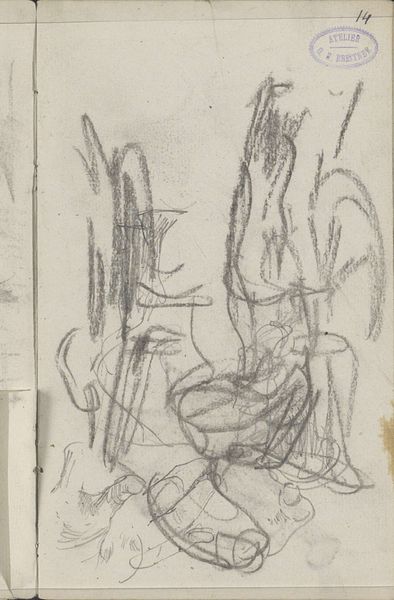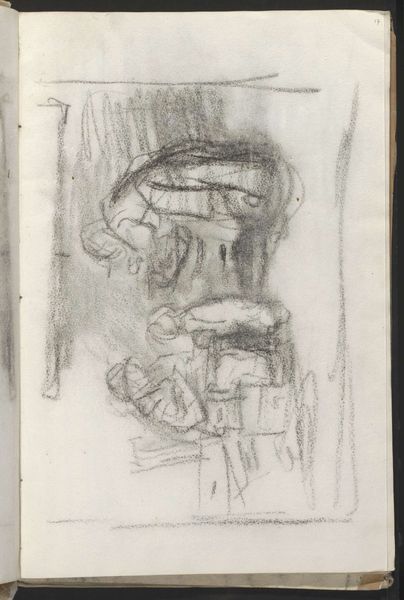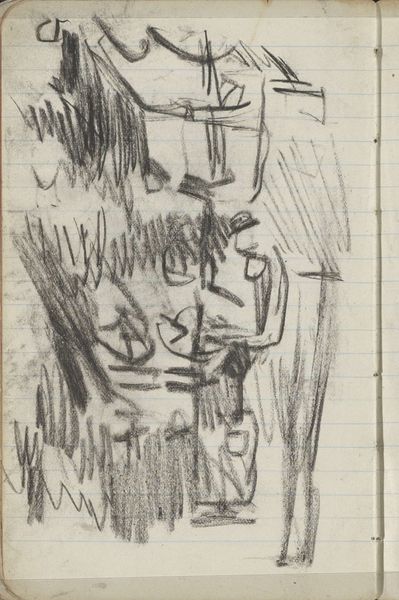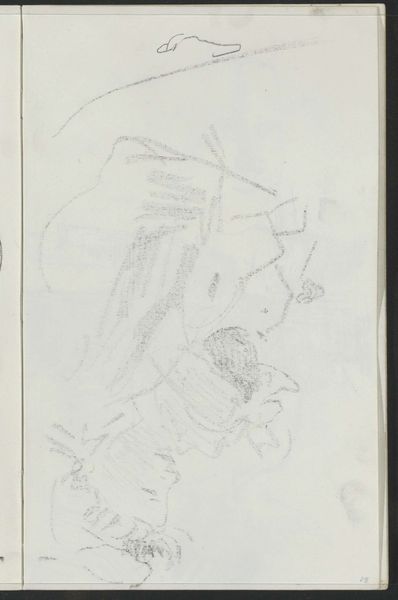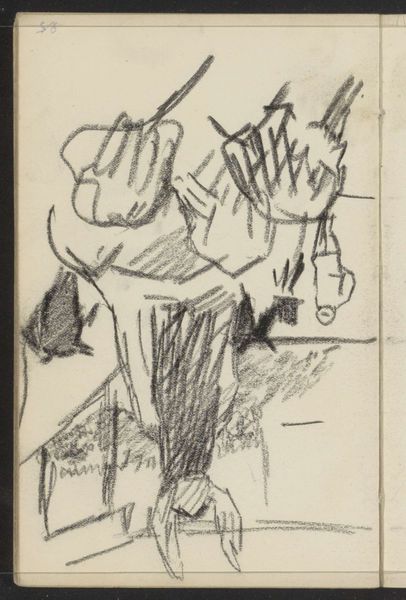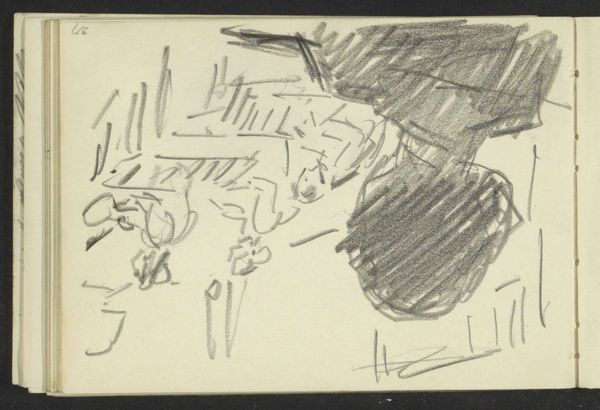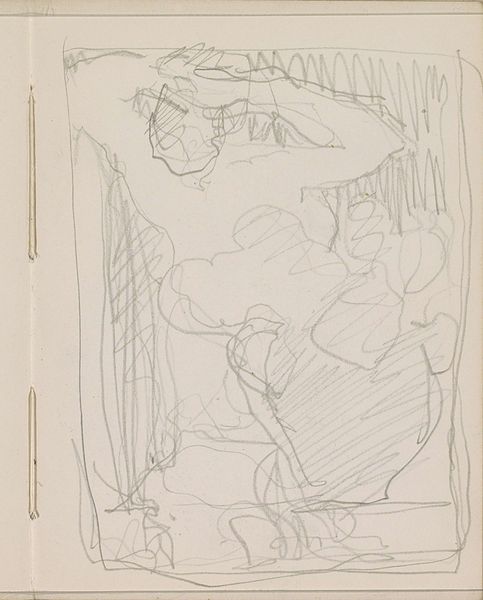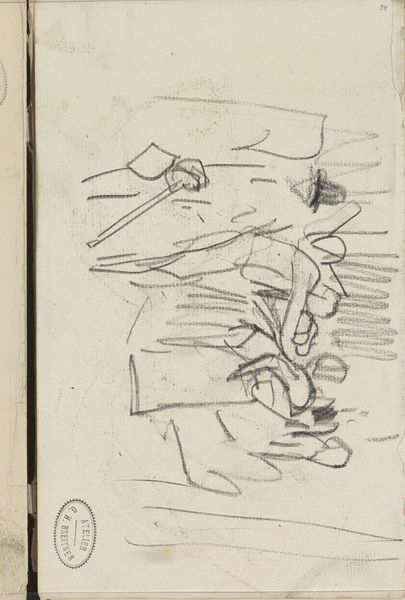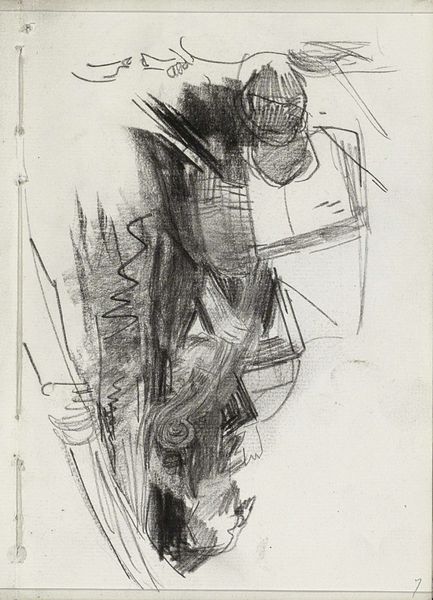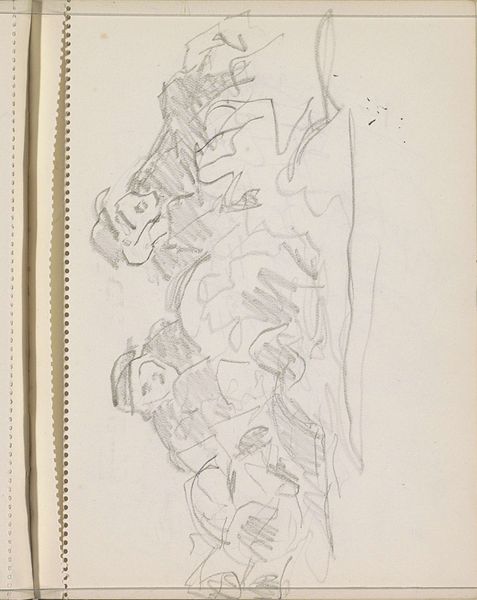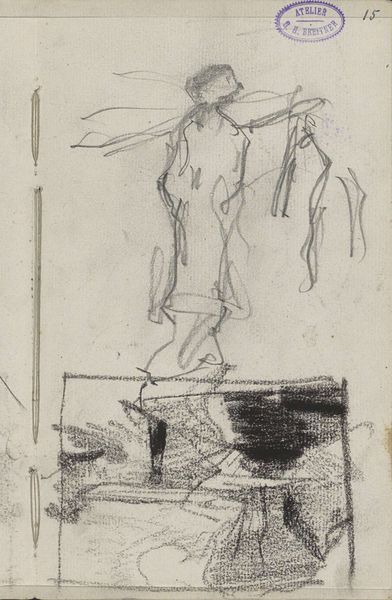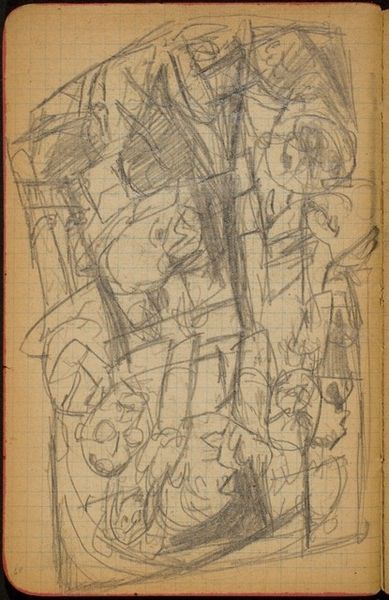
Copyright: Rijks Museum: Open Domain
Editor: Here we have "Groep zittende vrouwen," or "Group of Seated Women," by Isaac Israels, sometime between 1875 and 1934. It’s a drawing, maybe pencil or ink, with very delicate lines. It gives the impression of a quickly captured moment, like a page torn from a sketchbook. What can you tell me about this piece? Curator: This drawing is compelling when considering the material circumstances of its production. Note the thin paper, the immediacy suggested by the rushed linework. These women likely weren't posing in a formal studio setting, were they? Editor: Probably not, it seems like a very candid observation. Curator: Exactly! More like a fleeting observation. This drawing may come from one of his sketchbooks, an intimate look into the artist’s working process, of quickly mapping out scenes observed in daily life, and considering the social position of his subject matter, we must examine the labor implied here. Were these women working class, perhaps models, seamstresses? What can be gleaned about the way they might have understood and consumed fashion and art, if at all? Editor: That's interesting, I hadn't considered the labor aspect, only the sort of…effortlessness of the drawing. I’d thought it reflected an interest in the Impressionist movement and light. Curator: While stylistic connections to Impressionism are relevant, focusing on the social and material conditions allows us a more nuanced understanding. Israels captures a slice of life. His quick sketches highlight the often-overlooked labor inherent in being a woman at the turn of the century, perhaps working-class women trying to find work, or wealthy ladies who didn't have much power. How might understanding Israels’ social standing influence how we see the artist portraying these women? Editor: I see now, considering it in context of material conditions reveals a whole new layer of questions and social issues! Curator: Precisely! Art doesn't exist in a vacuum. By analyzing its materials and considering the social environment, we begin to unlock broader meanings and challenge established hierarchies between, say, sketches and more "finished" artworks. Editor: I definitely see the value in considering the materiality now. Thanks for illuminating that!
Comments
No comments
Be the first to comment and join the conversation on the ultimate creative platform.
